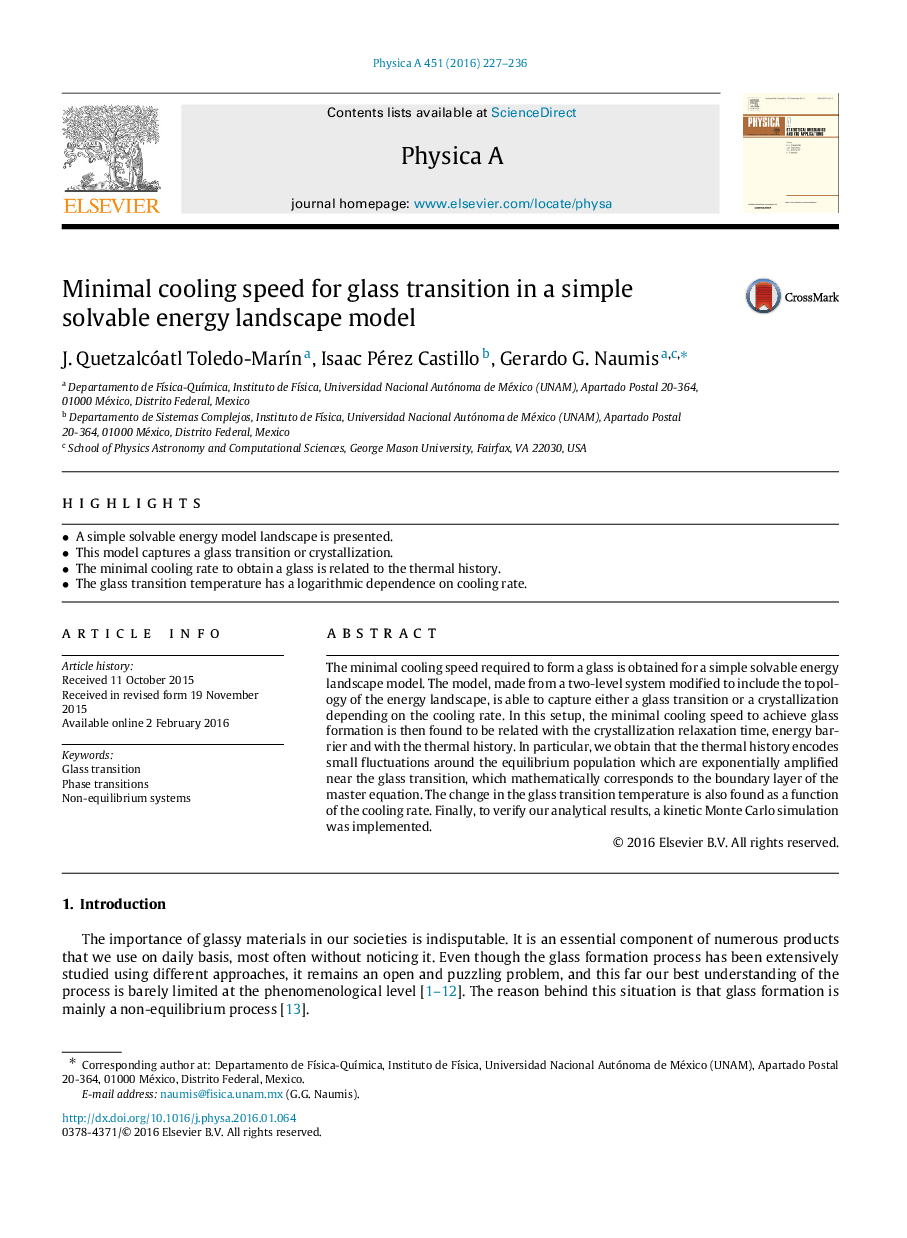| Article ID | Journal | Published Year | Pages | File Type |
|---|---|---|---|---|
| 976614 | Physica A: Statistical Mechanics and its Applications | 2016 | 10 Pages |
•A simple solvable energy model landscape is presented.•This model captures a glass transition or crystallization.•The minimal cooling rate to obtain a glass is related to the thermal history.•The glass transition temperature has a logarithmic dependence on cooling rate.
The minimal cooling speed required to form a glass is obtained for a simple solvable energy landscape model. The model, made from a two-level system modified to include the topology of the energy landscape, is able to capture either a glass transition or a crystallization depending on the cooling rate. In this setup, the minimal cooling speed to achieve glass formation is then found to be related with the crystallization relaxation time, energy barrier and with the thermal history. In particular, we obtain that the thermal history encodes small fluctuations around the equilibrium population which are exponentially amplified near the glass transition, which mathematically corresponds to the boundary layer of the master equation. The change in the glass transition temperature is also found as a function of the cooling rate. Finally, to verify our analytical results, a kinetic Monte Carlo simulation was implemented.
